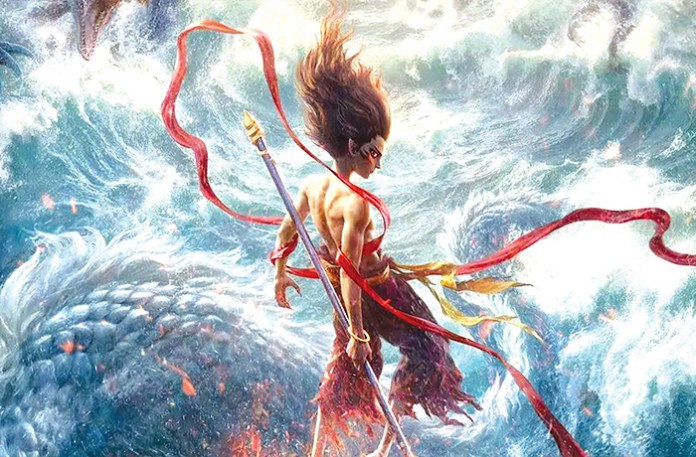In A Summer of Box Office Flops, ‘Deadpool & Wolverine’ Shines
The article discusses the landscape of superhero movies, likening them to video games in their loudness and overuse of CGI, often resulting in underwhelming scripts and characters. The author expresses a preference for the early Batman films and finds most Marvel Cinematic Universe (MCU) movies disappointing, having only enjoyed a few, predominantly those associated with the X-Men franchise.
Specifically, the piece critiques the latest film, “Deadpool & Wolverine” (D&W), amidst concerns that Disney’s acquisition of 20th Century Fox would dilute its raw content by pushing for a PG-13 rating. However, lead actor Ryan Reynolds reaffirmed that an R rating was crucial for the film’s release, following a failed family-friendly version of “Deadpool 2.”
Despite mixed reviews, the author praises D&W for its humor, cleverness, and emotional depth, opposing critics who labeled it as uninspired or merely fan service. The review highlights the film’s effective use of pop culture references, engaging fight scenes, and memorable cameos. Additionally, it appreciates the strong villains within the film and its eclectic soundtrack, mentioning specific songs and artists that feature prominently. the author finds D&W to be entertaining and a noteworthy addition to the superhero genre despite the criticisms it has received.
Superhero movies are like video games. They’re loud, flashy, underwritten, overlong, overburdened with CGI, populated with interchangeable characters and plot, topped off with an overwhelming dollop of sameness.
Prior to 2000, the only ones that worked for me were the two Michael Keaton “Batman” flicks, which don’t count since Batman isn’t a superhero but more of a billionaire playboy with a lot of neat gadgets. Since then, I’ve enjoyed only seven of the 47 Marvel Cinematic Universe (MCU) releases, six of which fall under the X-Men umbrella: “X2,” “X-Men: First Class,” “Logan,” and the now three “Deadpool” productions. The only non-X-Men MCU title I liked was the first “Iron Man” from 2008.
To be sure, the Deadpool movies suffer from many of the same problems as the other superhero flicks, but do so in smaller doses. They also separate themselves from the pack with hard-R ratings, self-awareness, and trainloads of genre-mocking satire. They lampoon the MCU while also celebrating it; a near-impossible feat to pull off with conviction.
The rub with this latest installment started with the sale of 20th Century Fox to Disney in March 2019. This was a year after the release of “Deadpool 2” and fans of the franchise were worried Disney would force any further releases to switch out that R rating for the more commercial- and family-friendly PG-13.
The first bit of good news came when producer, sometimes writer, and leading man, Ryan Reynolds nipped this in the bud and made it clear there would be no “Deadpool 3” without an R rating. This wasn’t just Reynolds flexing his clout. In December 2018, he agreed with Fox to release a sanitized PG-13 version of “Deadpool 2” titled “Once Upon a Deadpool.” All of the profanity and most of the violence were edited out. Predictably, the movie tanked.
Not only did it take in a paltry $51 million at the global office (compared to the $734 million for the original version), both critics (56 percent vs. 84 percent) and audiences (57 percent vs. 85 percent) on rottontomatoes.com (RT) turned on it. Reynolds had his precedent, whether knowingly wanting it or not.
One thing I’ve noticed this week on RT: the critics that are slamming “Deadpool & Wolverine” (D&W) are doing so for essentially the same reasons. “It isn’t really a movie,” “creatively exhausted,” “ugly and uninspired,” “little more than fan service.” Another big complaint: “too many cameos.”
Everyone is entitled to his opinion, but I disagree with all of them. I found “D&W” to be immensely entertaining, diabolically clever, sharp as a razor, double-over hilarious, and — like the previous two — tremendously moving when called for. Yes, it is also gory and violent but in a cartoon way, not a horror movie or “Goodfellas” kind of way. None of it is stomach-churning.
The only segment that didn’t bowl me over has Deadpool (Reynolds) and Wolverine (Hugh Jackman) engaging in a bloody street fight with an army of Deadpool offshoots — a direct reference to the two recent “Spider-man: Spiderverse” animated productions. Led by Lady Deadpool (Reynolds’ wife Blake Lively), it also includes two of their children, Matthew McConaughey as a cowboy version, and Nathan Fillion as the bodiless Headpool. It’s played out like a rumble in “West Side Story” accompanied by Madonna’s “Like a Prayer.”
Other superb needle drops include: ‘NYNC’s “Bye Bye Bye,” “Hells Bells” by AC/DC, “The Power of Love” from Huey Lewis, “You’re the One That I Want” from “Grease,” the Jimmy Durante standard “I’ll Be Seeing You,” and the rousing closer “All That I Need” by Aretha Franklin. Unlike last week’s “Twisters” with its wall-to-wall country, “D&W” is fittingly eclectic and all over the map.
I just don’t get the cameo complaint. One critic stated unless you’ve seen every MCU movie and TV show, you won’t recognize all of the cameo appearances. Fine. I don’t need to recognize every performer and have no intention of ever watching a single MCU show. I’m not that much of a completist. I identified all but two of the nearly three dozen cameo characters.
The rule of any movie, action or not, is that it will only be as good as its villain and here we have two great ones. The first is Mr. Paradox (Matthew Macfadyen), a spineless, paper-pushing bureaucrat charged with altering time or some such only-in-the-movies gobbledygook. Had the movie been made 10 years ago, this part would have likely gone to Kevin Spacey.
Not showing up until the one-hour mark is Emma Corrin as Cassandra Nova, the ruler of a fortress-type outlaw outpost called the Void. Bearing more than a passing resemblance to the dystopian production design in the “Mad Max” franchise, the Void is an ideal assignment for Nova, an outwardly charming type who literally gets under people’s skin. This character is blood-related to a major past MCU fixture.
This is the first time Jackman has appeared as Wolverine in an R-rated comedy, and he more than makes the most of it. He compliments Reynolds’ cloying tongue-in-cheek delivery with a furrowed-brow, gritted-teeth deadpan, without ever coming off too eager to please.
What can you say about Reynolds that wasn’t addressed in the first two movies? He inhabits Deadpool as well as or better than any other cinematic superhero in movie history. Hidden behind a mask most of time, he is still able to emit emotion through subtle movement and body language and doesn’t shy away from being vulnerable and humble when the mask is off.
Director Shawn Levy — who previously worked with Reynolds on the highly underrated “Free Guy” and the slightly disappointing “Adam Project” — did a fantastic job of not messing with a winning formula. Wisely following the leads of Tim Miller from the first and David Leitch from the second, Levy kept with the status quo and delivered what he should have: consistency.
The movie is poised to smash several box office records this weekend and already broke one Thursday by taking in $38.5 million from preview screenings. To put that in perspective, the second film made $18.6 million in the same period six years ago. Don’t be surprised if “D&W” becomes the highest-grossing R-rated movie of all time.
Since 1995, Michael Clark has written over 4,000 movie reviews and film-related articles for over 30 local and national media outlets. In 2017 he co-founded the Atlanta Film Critics Circle and is also a member of the Critics Choice Awards and the Georgia Film Critics Association.
" Conservative News Daily does not always share or support the views and opinions expressed here; they are just those of the writer."




